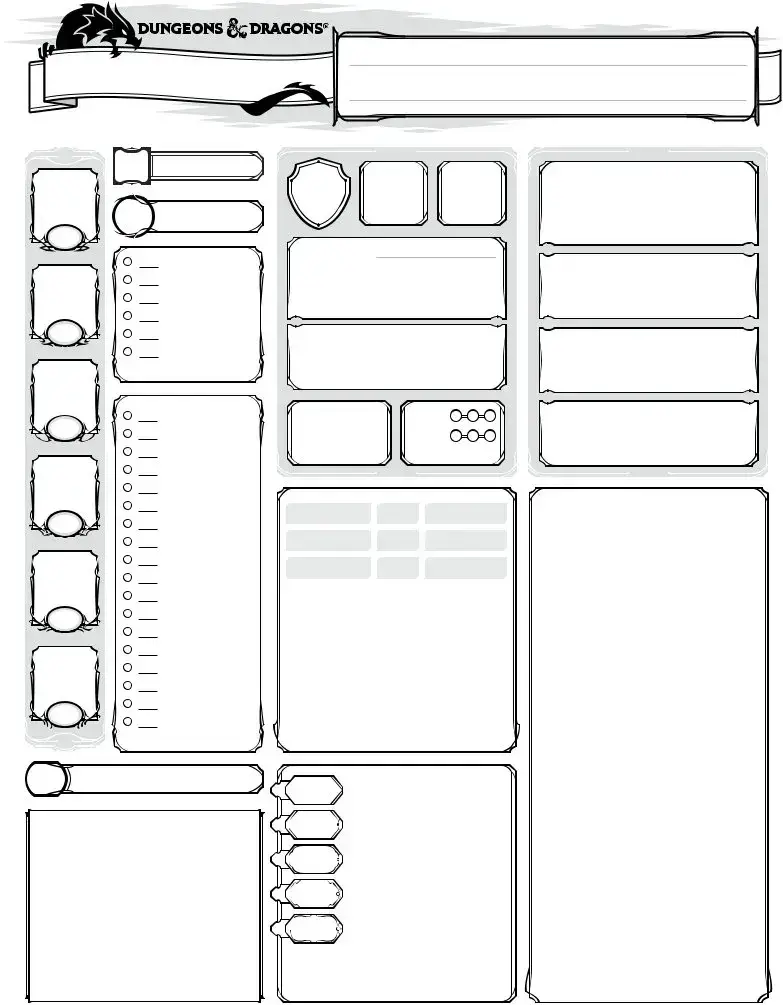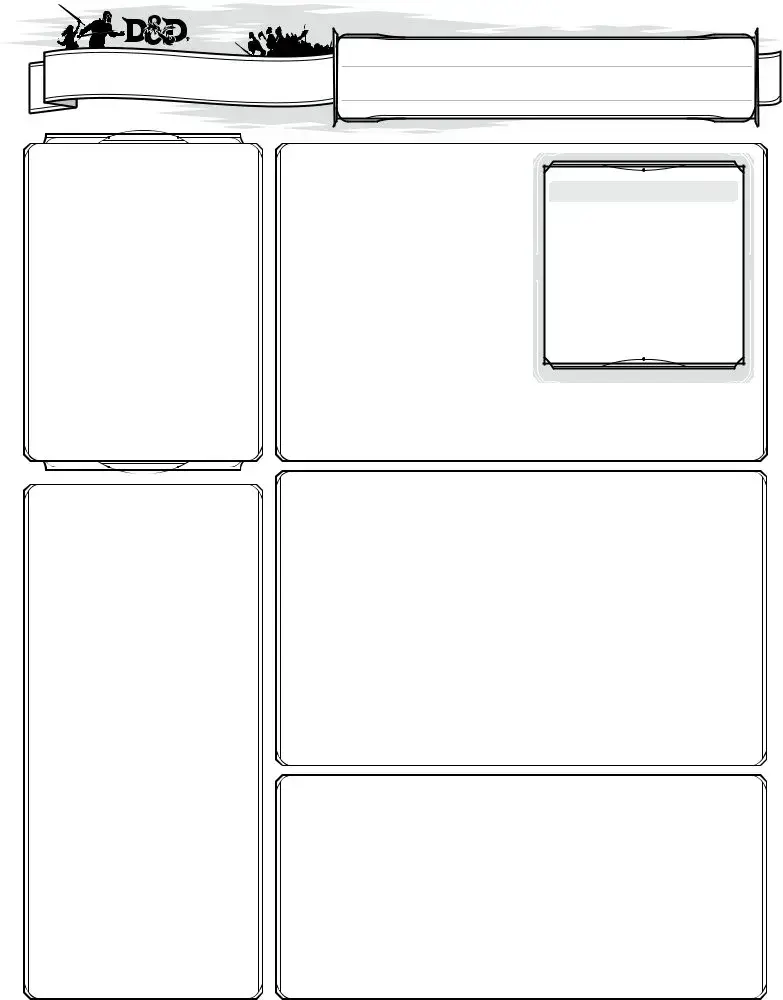The Dungeons & Dragons Character Sheet serves as a detailed record of a player's character, much like a résumé serves to summarize a person's qualifications and experience. Both documents compile essential information that gives insight into abilities, achievements, and personal traits. A résumé outlines professional skills and past positions, while a character sheet lists a character’s attributes, skills, and backstory, providing the foundation for their journey in the game.
Similar to a report card, which marks a student's academic performance, the character sheet reflects a character's capabilities and growth. Just as report cards offer insights into a student’s strengths and areas for improvement, the character sheet allows a player to track their character’s development, including levels, skills gained, and relationships built throughout the game.
A medical history form is another document akin to the character sheet. It details a patient’s past treatments, conditions, and medications. Similarly, the D&D character sheet records a character’s history, abilities, and items acquired. Both documents are essential for understanding the subject’s background and how it influences current circumstances.
The personal identification form, often used in various applications, shares similarities with the character sheet, as it contains crucial personal information. An ID form includes basic details such as name, age, and address. On the other hand, the character sheet provides information such as the character’s name, race, and class. Both serve to identify and categorize the individual, whether for administrative purposes or in the context of a game.
A project proposal can be compared to the character sheet, as both outline objectives and required resources. A project proposal details the goals and methods for achieving a task, while the character sheet demonstrates how a character's skills and background will help navigate challenges within the game. Each document establishes a framework for action, setting the stage for what is to come.
A business plan also parallels the structure of the character sheet. Just as a business plan showcases a business’s mission, strategies, and financial projections, the character sheet highlights a character's goals, potential allies, and resources. Both documents serve as blueprints, guiding decisions and actions based on careful planning and strategy.
The tenant application form, often filled out when seeking rental housing, is similar in that it collects vital information for evaluation. Much like a tenant application includes details regarding employment, income, and rental history, the character sheet compiles data about the character's skills, experiences, and equipment. Each document forms the basis for assessing suitability, whether for tenancy or for participation in a fantasy adventure.
Finally, a travel itinerary shares similarities with the D&D character sheet. An itinerary outlines the key details of a journey, including destinations, accommodations, and activity plans. In comparison, the character sheet maps out a character's progression, including quests, achievements, and goals they aim to accomplish. Both documents help keep individuals organized and focused on the tasks ahead as they embark on their respective journeys.













